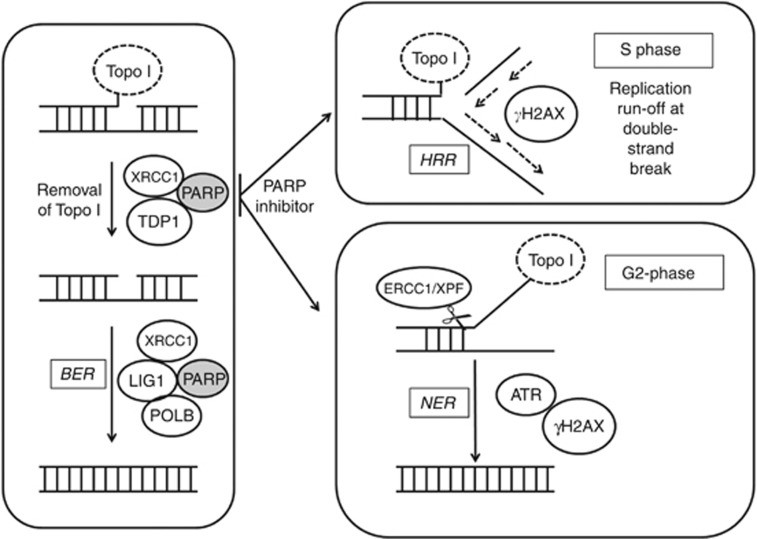Figure 6.
A model for repair of Topo I-induced lesions during the cell cycle. Topo I poisons (e.g., camptothecin) stabilise the covalent complex between DNA and Topo I protein. Recruitment of TDP1 (which hydrolyses the 3′-phosphotyrosyl bond that links Topo I to the DNA) is mediated via PARP and XRCC1. Base excision repair (BER) is completed by PARP and XRCC1 in concert with in-filling activity of POLB and ligase1. The presence of a PARP inhibitor results in the persistence of SSB in G1, and during S phase and homologous recombination repair (HRR), the SSB stall replication forks and create DSB that stimulate phosphorylation of H2AX. In G2, PARP inhibition may lead to activation of XPF/ERCC1-mediated nucleotide excision repair (NER) to remove the Topo I-bound DNA, which creates a NER intermediate that activates H2AX phosphorylation.

